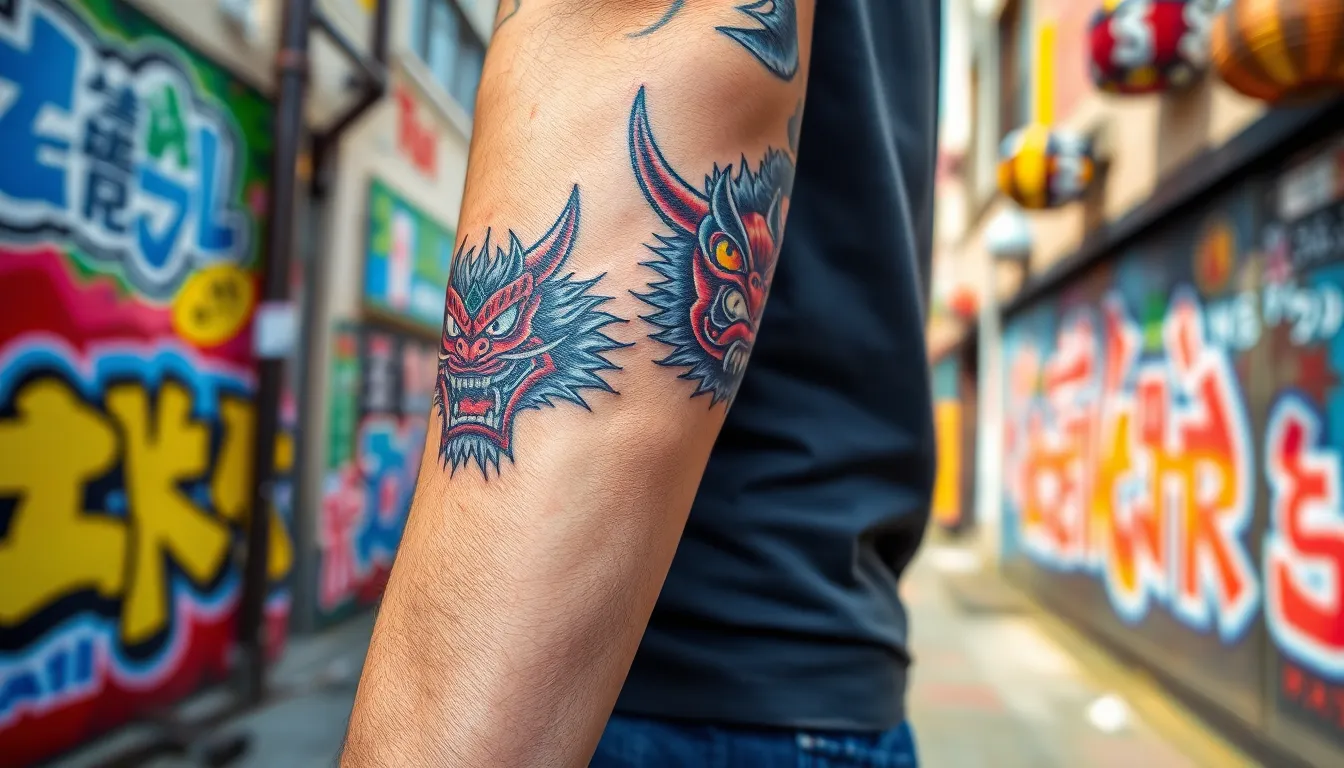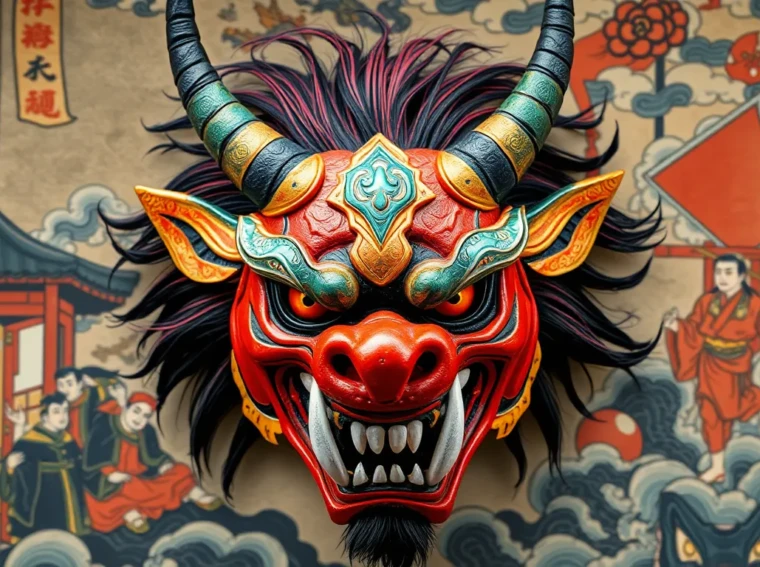The oni symbol holds a rich tapestry of meaning in Japanese culture, representing both fearsome demons and protective spirits. Often depicted with vibrant colors and exaggerated features, these mythical creatures are deeply embedded in folklore and art. Their duality captivates the imagination, embodying chaos and protection in equal measure.
Understanding the oni symbol goes beyond its surface appearance. It reflects a complex interplay of tradition and modern interpretation, making it a fascinating subject for exploration. From festivals to tattoos, the oni continues to inspire and intrigue, bridging the gap between ancient beliefs and contemporary expression. Dive into the world of the oni symbol and discover its significance in shaping cultural narratives.
The Oni Symbol: An Overview
The oni symbol reflects a complex nature within Japanese culture, embodying elements of both fear and protection. Often depicted as fearsome figures with sharp claws and wild hair, oni are traditionally associated with evil spirits and chaos. Yet, these beings also serve as protective spirits, warding off malevolent forces during various festivities.
Oni appear vibrantly in folklore and arts, showcasing a blend of terrifying and heroic qualities. They often occupy the role of antagonists in stories, representing inner fears while also acting as guardians during celebrations like Setsubun. Their striking appearances, characterized by wild expressions and vivid colors, reinforce their dual imagery.
Over time, interpretations of the oni symbol have evolved significantly. In contemporary contexts, oni frequently appear in tattoos and popular culture, demonstrating a shift toward embracing their protective aspects. Festivals often celebrate these entities with elaborate costumes and performances, highlighting their importance in cultural narratives. The oni symbol continues to influence various art forms, resonating deeply in Japan’s collective imagination.
Oni Symbol

The oni symbol holds a prominent place in Japanese culture, reflecting historical and contemporary narratives. Its representation merges fear with protection, illustrating the complexity of human emotions and societal beliefs.
Historical Context
Oni originated in ancient Japan, often linked to Buddhist teachings and folklore. In early texts, oni served as representations of chaos and were associated with disasters and misfortunes. Over time, tales of oni evolved, depicting them as fierce adversaries against evil spirits. Festivals like Setsubun incorporated oni as a means to drive away malevolent forces, emphasizing their protective qualities. The transformation of oni from mere harbingers of doom to complex figures illustrates societal changes in understanding good and evil.
Modern Interpretations
Today’s interpretations of the oni symbol blend traditional elements with contemporary themes. Oni frequently appear in media, including anime and manga, where they embody both villainy and heroism. Tattoos featuring oni reflect personal narratives, showcasing protection and strength. In urban art, oni represent a fusion of cultural heritage and modern aesthetics, often celebrated in festivals and local events. Their duality resonates with audiences, maintaining relevance in cultural dialogues and artistic expressions.
Variations of the Oni Symbol
The oni symbol manifests in various forms across regions and artistic representations, reflecting the diverse interpretations ingrained in Japanese culture. These variations enhance the understanding of oni’s significance and adapt to different cultural contexts.
Regional Differences
Regional differences in the oni symbol emphasize unique cultural interpretations.
- Kanto Region: In the Kanto area, oni are often depicted with long horns and vibrant colors, symbolizing chaos and misfortune.
- Kansai Region: Kansai’s oni often present a more playful appearance, showcasing exaggerated facial features that emphasize their protective roles during celebrations.
- Tohoku Region: In Tohoku, oni embody local folklore, frequently appearing in festivals with masks that represent specific tales of heroism and bravery.
Each region’s depiction reflects local beliefs and narratives, shaping the oni’s role in the cultural landscape.
Artistic Representations
Artistic representations of the oni symbol vary significantly across mediums, showcasing the versatility of its imagery.
- Traditional Art: Woodblock prints and paintings often capture oni in dramatic, expressive poses, highlighting their ferocity and complexity in nature.
- Contemporary Art: Modern artists reinterpret the oni through graffiti and street art, infusing them with vibrant colors and contemporary styles, making the symbol relatable to newer generations.
- Tattoo Culture: Tattoos featuring oni illustrate personal stories of strength and protection, often incorporating intricate designs that blend traditional elements with personal expression.
These artistic variations contribute to the ongoing dialogue surrounding the oni symbol, enhancing its relevance in both historical and contemporary contexts.
The Oni Symbol in Popular Culture
The oni symbol significantly influences various cultural contexts, extending its presence in media, fashion, and design. Its dual nature continues to resonate, reflecting societal themes and personal narratives.
Representation in Media
Oni frequently appear in anime, manga, and video games, embodying a range of characters from antagonists to heroic figures. In series like “Demon Slayer” and “Naruto,” oni represent complex themes such as strength, redemption, and the struggle against inner demons. Films also utilize oni to depict supernatural elements, enhancing narratives with cultural depth. As visual icons, oni connect with audiences by portraying both fear and resilience, cementing their place in contemporary storytelling.
Influence on Fashion and Design
Oni motifs have permeated fashion and design, inspiring clothing lines, accessories, and artwork. Designers integrate oni imagery into streetwear, tattoos, and home decor, making the symbol accessible to wider audiences. Apparel featuring oni designs often reflects bold, vibrant colors and intricate details, appealing to those who appreciate cultural aesthetics. Additionally, the adaptation of the oni symbol in modern design serves both decorative and symbolic purposes, representing strength and protection while honoring its traditional roots.
Conclusion
The oni symbol stands as a powerful representation of the complexities within Japanese culture. It embodies the interplay between fear and protection highlighting how societal beliefs evolve over time. From ancient folklore to modern media the oni continues to captivate audiences with its dual nature.
As a source of inspiration in art fashion and tattoos the oni symbol remains relevant in contemporary discussions. Its presence in popular culture reinforces the ongoing dialogue about strength redemption and the human experience. Through its vibrant depictions the oni not only reflects historical narratives but also resonates with personal stories of resilience and protection.
Ultimately the oni symbol invites a deeper understanding of the emotions that shape human experiences bridging the gap between tradition and modernity.

